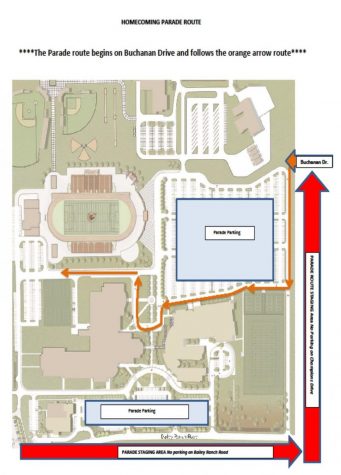Safe Places; what are they?

In the front of virtually every Quik Trip a yellow, diamond-shaped sign that says “safe place” stands as a beacon. Safe places exist all over the country, but what is a “safe place”? According to nationalsafeplace.org, Safe Place is a “national youth outreach and prevention program for young people under the age of 18 (up to 21 years of age in some communities) in need of immediate help and safety.” But where are they and why are they there?
Where are Safe Places? Safe Places can be found at YMCAs, libraries, fire stations, public buses, various businesses, and social service facilities. The closest Safe Place in Aledo is the new fire station directly across the street from the high school, as they said they are a “safe haven,” The next closest is the YMCA in Benbrook and the Quiktrip also in Benbrook. If you need immediate help and don’t know where to find a Safe Place, you can text “HELP” and your current location to 69866, and within seconds you’ll receive the closest Safe Place location and the number for the local youth agency. You will also have the option to “text interactively” with a professional for more help.
What are Safe Places for? Safe Places are for any young person in immediate danger or trouble, like extreme bullying, an unsafe driver, a bad date, or a person being followed home.
“Sometimes youth need help and safety from an immediate threat from strangers and even friends,” said nationalsafeplace.org. “Riding with an unsafe or under-the-influence driver can be a very real danger. Being separated or stranded from friends in unfamiliar and possibly dangerous surroundings can lead to tragic outcomes. Safe Place can provide a safe way to get reconnected with loved ones, possibly preventing victimization and further injury.”
Safe Places are also for those undergoing stress or abuse in their household or for those teens who are running away from home. Nationalsafeplace.org states that youth may undergo many difficult situations in their lives, and that these may lead them to make dangerous decisions in an effort to escape these situations.
“Providing Safe Place as a resource for youth provides a safety net for them,” said nationalsafeplace.org.
How do Safe Places work? Nationalsafeplace.org easily lists the steps for getting help using safe place.
Step One – A young person enters a Safe Place and asks for help.
Step Two – The site employee finds a comfortable place for the youth to wait while they call the licensed Safe Place agency.
Step Three – Within 30 minutes, a qualified Safe Place volunteer or agency staff member will arrive to talk with the youth and, if necessary, provide transportation to the agency.
Step Four – Once at the agency, counselors meet with the youth and provide support. Agency staff makes sure the youth and their families receive the help and professional services they need.
How can you get involved? A great way to help out Safe Place is by letting people know what it is and that it exists. Spread the word! It may help a friend or peer in need. You can also join your local Youth Advisory Board, which provide the opportunity to meet in person and participate in hands-on activities. Safe Place also gratefully accepts donations.
Nationalsafeplace.org also has many tips for teens concerning topics like abuse, bullying, body awareness, drugs and alcohol, eating disorders, etc., and they list websites and hotlines that can help, as well as children’s books to help inform future generations. Safe Place works toward making communities safe for teens, so whether or not you know someone in trouble, spread the word and help let others know about the help that’s available to them.






Aaron • Jan 23, 2018 at 10:06 am
This was very greatly written and descriptive.